-
 Bitcoin
Bitcoin $107,352.1067
0.28% -
 Ethereum
Ethereum $2,429.3531
-0.90% -
 Tether USDt
Tether USDt $1.0001
-0.02% -
 XRP
XRP $2.1894
4.62% -
 BNB
BNB $646.7968
0.36% -
 Solana
Solana $147.4290
4.03% -
 USDC
USDC $0.9998
-0.02% -
 TRON
TRON $0.2756
1.52% -
 Dogecoin
Dogecoin $0.1630
1.14% -
 Cardano
Cardano $0.5612
1.18% -
 Hyperliquid
Hyperliquid $37.0580
-0.05% -
 Bitcoin Cash
Bitcoin Cash $496.9410
-0.09% -
 Sui
Sui $2.7318
3.19% -
 Chainlink
Chainlink $13.1503
0.58% -
 UNUS SED LEO
UNUS SED LEO $9.0766
0.55% -
 Avalanche
Avalanche $17.7220
1.46% -
 Stellar
Stellar $0.2380
1.52% -
 Toncoin
Toncoin $2.8439
0.38% -
 Shiba Inu
Shiba Inu $0.0...01143
1.84% -
 Litecoin
Litecoin $85.8053
1.47% -
 Hedera
Hedera $0.1483
2.70% -
 Monero
Monero $314.3240
2.12% -
 Bitget Token
Bitget Token $4.6725
0.77% -
 Dai
Dai $1.0000
0.00% -
 Polkadot
Polkadot $3.3555
1.28% -
 Ethena USDe
Ethena USDe $1.0001
0.02% -
 Uniswap
Uniswap $7.0890
2.64% -
 Pi
Pi $0.5355
-3.40% -
 Pepe
Pepe $0.0...09393
1.06% -
 Aave
Aave $256.8136
-1.90%
Web3 Social Jargon: Emerging Terminology for Decentralized Social Media
Web3 social media introduces terms like DeSoc, social tokens, DIDs, NFTs, and DAOs, enhancing user control, privacy, and community governance.
May 11, 2025 at 10:28 pm

In the rapidly evolving landscape of Web3 and decentralized social media, new jargon and terminology are constantly emerging. Understanding these terms is crucial for anyone looking to navigate and participate in this burgeoning field. This article aims to provide a comprehensive overview of the key terminology associated with Web3 social media, helping you stay up-to-date with the latest developments and trends.
Decentralized Social Networks (DeSoc)
Decentralized Social Networks (DeSoc) are platforms that operate on blockchain technology, offering users greater control over their data and privacy. Unlike traditional social media platforms, which are controlled by centralized entities, DeSoc platforms distribute control across a network of users. This shift in power dynamics allows for more transparent and democratic governance of the platform.
Key features of DeSoc include:
- User-owned data: Users have sovereignty over their personal information, with the ability to control who can access and use their data.
- Decentralized governance: Decisions about platform rules and updates are made collectively by the community, often through voting mechanisms.
- Interoperability: DeSoc platforms often support the ability to interact with other decentralized applications (dApps), enhancing user experience and functionality.
Social Tokens
Social Tokens are a form of cryptocurrency that represents a user's influence, reputation, or community within a social network. These tokens can be used to reward content creators, incentivize engagement, or grant access to exclusive features or communities.
The concept of social tokens is closely linked to the idea of tokenized communities, where members hold tokens that represent their stake in the community. This can lead to:
- Monetization of influence: Influencers and creators can earn tokens based on their engagement and contributions, providing a new revenue stream.
- Community governance: Token holders can participate in decision-making processes, ensuring that the platform evolves in line with community interests.
- Enhanced user engagement: By tying tokens to engagement, platforms can encourage more active participation and interaction among users.
Decentralized Identifiers (DIDs)
Decentralized Identifiers (DIDs) are a type of identifier that enables verifiable, self-sovereign digital identities. In the context of Web3 social media, DIDs allow users to create and manage their own digital identities without relying on centralized authorities.
DIDs offer several advantages, including:
- Privacy and security: Users can control their personal data and share it selectively, reducing the risk of data breaches and unauthorized access.
- Portability: DIDs are not tied to specific platforms, allowing users to maintain their identity across different services and applications.
- Interoperability: DIDs can be used across different decentralized systems, facilitating seamless interactions and data exchange.
Non-Fungible Tokens (NFTs) in Social Media
Non-Fungible Tokens (NFTs) are unique digital assets that can represent ownership of a wide range of items, from art and music to virtual real estate. In the realm of Web3 social media, NFTs are being used to create new forms of digital content and interaction.
Some of the ways NFTs are being integrated into social media include:
- Digital collectibles: Users can create, buy, and sell unique digital items, such as profile pictures or virtual goods, as NFTs.
- Exclusive content: Creators can offer exclusive content or experiences as NFTs, providing a new way to monetize their work.
- Social proof: Owning certain NFTs can serve as a form of social proof or status within a community, enhancing the user's reputation and influence.
Decentralized Autonomous Organizations (DAOs)
Decentralized Autonomous Organizations (DAOs) are entities governed by smart contracts on a blockchain, allowing for decentralized decision-making and management. In the context of Web3 social media, DAOs can be used to manage and govern social platforms or communities.
Key aspects of DAOs in social media include:
- Community-driven governance: DAOs enable members to vote on proposals and decisions, ensuring that the platform is run in accordance with the community's interests.
- Transparent operations: All transactions and decisions within a DAO are recorded on the blockchain, providing a high level of transparency and accountability.
- Incentive structures: DAOs can implement token-based incentive systems to reward participation and contributions, fostering a more engaged and active community.
Web3 Social Jargon: Key Terms and Definitions
As Web3 social media continues to evolve, new terms and concepts are constantly being introduced. Here are some additional key terms to be aware of:
- Crypto Social: A term used to describe social media platforms that integrate cryptocurrency and blockchain technology, enabling new forms of interaction and monetization.
- Token-gated Access: A feature that restricts access to certain content or features based on the ownership of specific tokens, enhancing exclusivity and engagement.
- Social Mining: A process where users can earn tokens by participating in social activities, such as posting, commenting, or sharing content.
- Web3 Profiles: Digital profiles that are controlled by users and can be used across different decentralized platforms, providing a more seamless and portable identity.
Understanding these terms and concepts is essential for anyone looking to engage with and contribute to the Web3 social media ecosystem. As the field continues to grow and evolve, staying informed about the latest terminology will help you navigate this exciting and dynamic space.
Frequently Asked Questions
Q: How can I get started with using social tokens on a decentralized social platform?
A: To get started with social tokens on a decentralized social platform, follow these steps:
- Choose a platform: Select a decentralized social network that supports social tokens, such as Steemit or Hive.
- Create an account: Sign up for an account on the chosen platform, ensuring you have a wallet compatible with the platform's cryptocurrency.
- Engage with the community: Start participating in the platform's activities, such as posting content, commenting, and voting on other users' posts.
- Earn tokens: As you engage with the platform, you will earn social tokens based on your contributions and engagement.
- Use tokens: Use your earned tokens to access exclusive features, tip other users, or participate in governance decisions.
Q: What are the benefits of using Decentralized Identifiers (DIDs) in social media?
A: The benefits of using DIDs in social media include:
- Enhanced privacy: Users can control their personal data and share it selectively, reducing the risk of data breaches and unauthorized access.
- Portability: DIDs allow users to maintain their identity across different platforms and applications, enhancing user experience and convenience.
- Interoperability: DIDs can be used across different decentralized systems, facilitating seamless interactions and data exchange between platforms.
- Self-sovereign identity: Users have full control over their digital identity, enabling them to manage and update their information without relying on centralized authorities.
Q: How do Non-Fungible Tokens (NFTs) enhance the social media experience?
A: NFTs enhance the social media experience in several ways:
- Unique digital assets: Users can create, buy, and sell unique digital items, such as profile pictures or virtual goods, adding a new layer of personalization and interaction.
- Monetization opportunities: Creators can offer exclusive content or experiences as NFTs, providing a new way to monetize their work and engage with their audience.
- Social proof and status: Owning certain NFTs can serve as a form of social proof or status within a community, enhancing the user's reputation and influence.
- Collectibility and scarcity: The unique nature of NFTs creates a sense of collectibility and scarcity, encouraging users to engage with and value digital content in new ways.
Q: What role do Decentralized Autonomous Organizations (DAOs) play in managing Web3 social platforms?
A: DAOs play a crucial role in managing Web3 social platforms by:
- Enabling community-driven governance: DAOs allow members to vote on proposals and decisions, ensuring that the platform is run in accordance with the community's interests and values.
- Providing transparent operations: All transactions and decisions within a DAO are recorded on the blockchain, providing a high level of transparency and accountability to the platform's operations.
- Implementing incentive structures: DAOs can implement token-based incentive systems to reward participation and contributions, fostering a more engaged and active community.
- Facilitating decentralized decision-making: By using smart contracts to automate governance processes, DAOs enable decentralized decision-making and management, reducing the need for centralized control and enhancing the platform's resilience and adaptability.
Disclaimer:info@kdj.com
The information provided is not trading advice. kdj.com does not assume any responsibility for any investments made based on the information provided in this article. Cryptocurrencies are highly volatile and it is highly recommended that you invest with caution after thorough research!
If you believe that the content used on this website infringes your copyright, please contact us immediately (info@kdj.com) and we will delete it promptly.
- Altcoins, Explosive Gains, and Cryptocurrency: What's the Hype?
- 2025-06-28 21:12:19
- SEI Mirroring Solana: Price Spikes and the Next Big Crypto?
- 2025-06-28 20:52:13
- Pi Network's Pi2Day: Token Tank and Disappointing Rollout?
- 2025-06-28 21:27:13
- PENGU Price Surges: Are Whales Targeting $0.0149?
- 2025-06-28 20:30:12
- Bitcoin Adoption, Portfolio Allocation, and Financial Advisors: A New Era
- 2025-06-28 21:27:13
- Kaanch vs. XRP: Spotting the Next Big Thing & Entry Price Opportunities
- 2025-06-28 21:50:12
Related knowledge
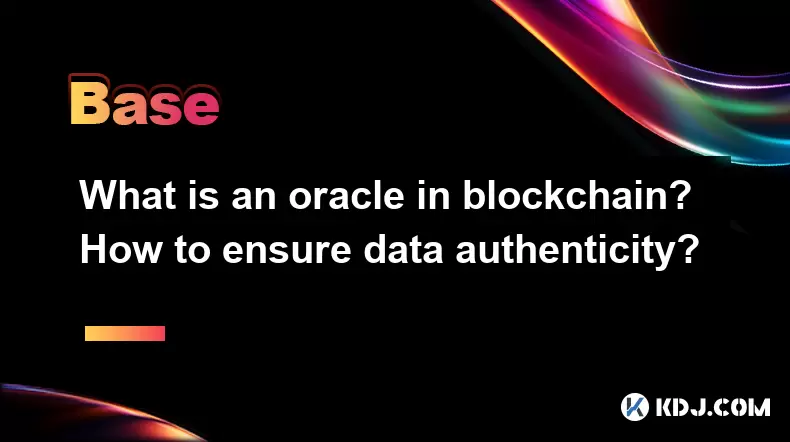
What is an oracle in blockchain? How to ensure data authenticity?
Jun 19,2025 at 08:49pm
Understanding the Role of an Oracle in BlockchainIn the context of blockchain technology, an oracle serves as a bridge between the blockchain and external data sources. While blockchains are inherently secure and decentralized, they cannot access real-world information on their own. Oracles enable smart contracts to interact with off-chain data such as ...
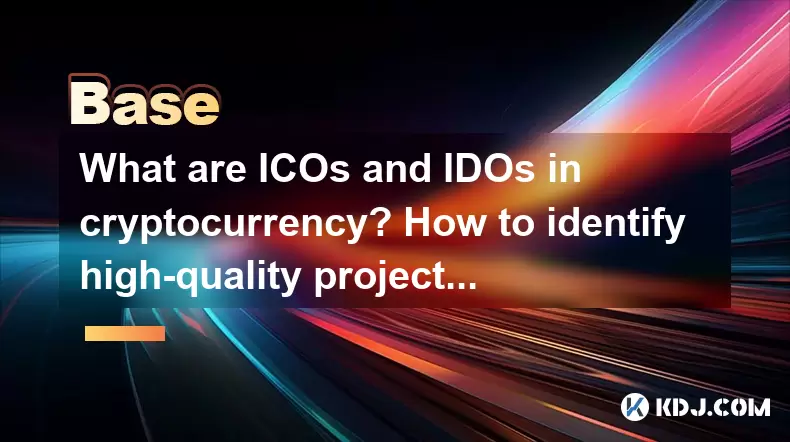
What are ICOs and IDOs in cryptocurrency? How to identify high-quality projects?
Jun 22,2025 at 11:49am
Understanding ICOs in CryptocurrencyInitial Coin Offerings (ICOs) are fundraising mechanisms used by cryptocurrency startups to raise capital for their projects. In an ICO, a company creates and sells its own tokens to investors in exchange for established cryptocurrencies like Bitcoin or Ethereum. The process typically involves the release of a whitepa...
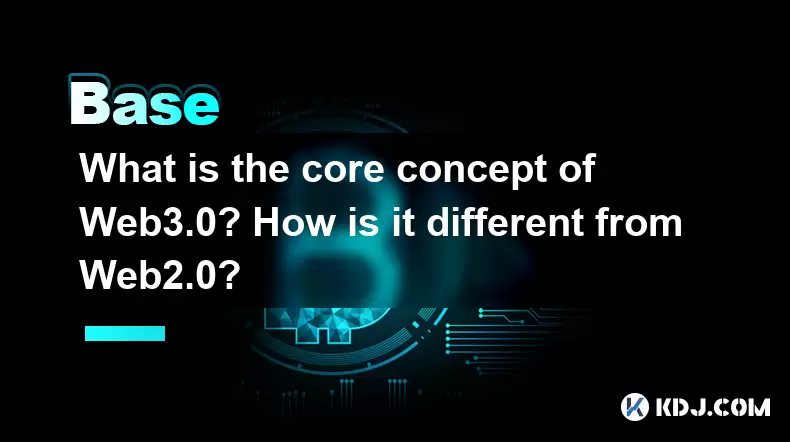
What is the core concept of Web3.0? How is it different from Web2.0?
Jun 21,2025 at 05:56pm
Decentralization as the Foundation of Web3.0The core concept of Web3.0 revolves around decentralization, which fundamentally challenges the centralized architecture of Web2.0. In Web3.0, control and ownership are distributed across a network rather than being held by a central authority or corporation. This is achieved primarily through blockchain techn...
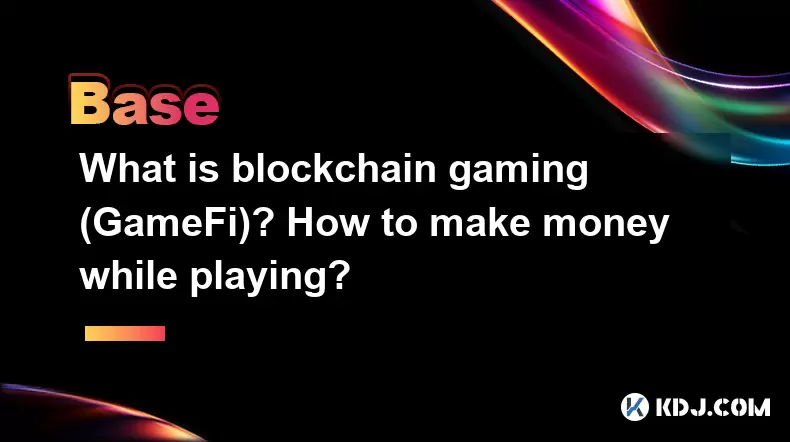
What is blockchain gaming (GameFi)? How to make money while playing?
Jun 20,2025 at 07:56am
Understanding Blockchain Gaming (GameFi)Blockchain gaming, often referred to as GameFi, is a fusion of blockchain technology and video games. It enables players to own in-game assets through non-fungible tokens (NFTs) and earn rewards via cryptocurrencies or token-based systems. Unlike traditional games where items are controlled by centralized develope...
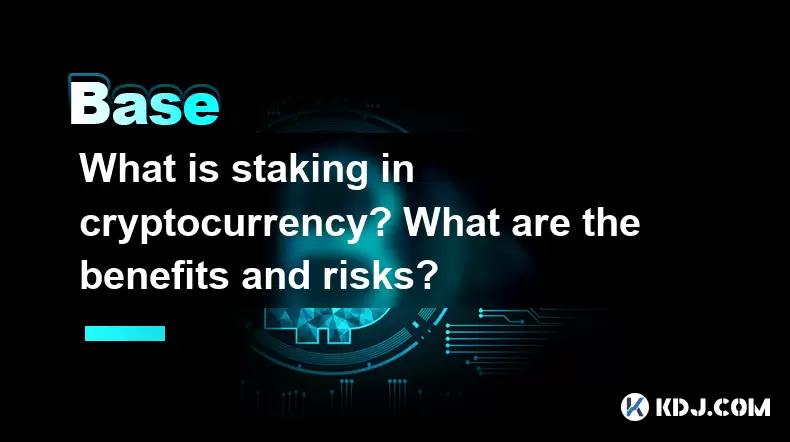
What is staking in cryptocurrency? What are the benefits and risks?
Jun 22,2025 at 10:01am
Understanding the Concept of Staking in CryptocurrencyStaking in cryptocurrency refers to the process of actively participating in transaction validation on a blockchain network that uses a Proof-of-Stake (PoS) consensus mechanism. Instead of miners competing to solve complex mathematical puzzles as in Proof-of-Work systems like Bitcoin, PoS blockchains...
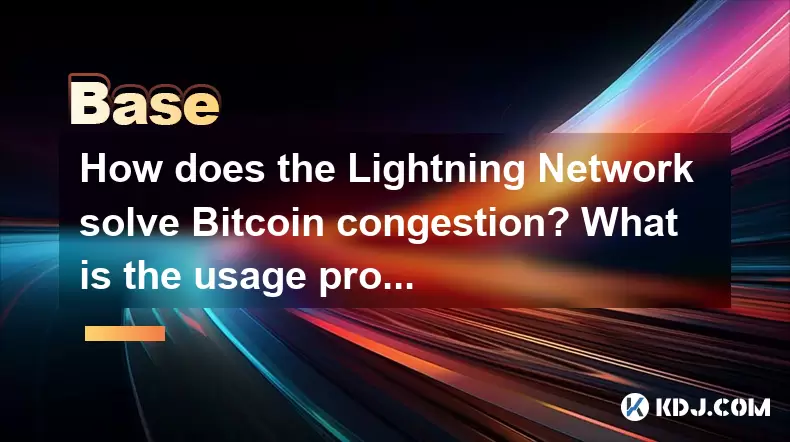
How does the Lightning Network solve Bitcoin congestion? What is the usage process?
Jun 23,2025 at 06:21pm
Understanding Bitcoin Network CongestionBitcoin, as a decentralized digital currency, operates on a blockchain that records every transaction in a public ledger. Each block has a limited size, typically 1 megabyte, which allows for only a certain number of transactions per second (TPS). When the number of transactions increases, the network becomes cong...

What is an oracle in blockchain? How to ensure data authenticity?
Jun 19,2025 at 08:49pm
Understanding the Role of an Oracle in BlockchainIn the context of blockchain technology, an oracle serves as a bridge between the blockchain and external data sources. While blockchains are inherently secure and decentralized, they cannot access real-world information on their own. Oracles enable smart contracts to interact with off-chain data such as ...

What are ICOs and IDOs in cryptocurrency? How to identify high-quality projects?
Jun 22,2025 at 11:49am
Understanding ICOs in CryptocurrencyInitial Coin Offerings (ICOs) are fundraising mechanisms used by cryptocurrency startups to raise capital for their projects. In an ICO, a company creates and sells its own tokens to investors in exchange for established cryptocurrencies like Bitcoin or Ethereum. The process typically involves the release of a whitepa...

What is the core concept of Web3.0? How is it different from Web2.0?
Jun 21,2025 at 05:56pm
Decentralization as the Foundation of Web3.0The core concept of Web3.0 revolves around decentralization, which fundamentally challenges the centralized architecture of Web2.0. In Web3.0, control and ownership are distributed across a network rather than being held by a central authority or corporation. This is achieved primarily through blockchain techn...

What is blockchain gaming (GameFi)? How to make money while playing?
Jun 20,2025 at 07:56am
Understanding Blockchain Gaming (GameFi)Blockchain gaming, often referred to as GameFi, is a fusion of blockchain technology and video games. It enables players to own in-game assets through non-fungible tokens (NFTs) and earn rewards via cryptocurrencies or token-based systems. Unlike traditional games where items are controlled by centralized develope...

What is staking in cryptocurrency? What are the benefits and risks?
Jun 22,2025 at 10:01am
Understanding the Concept of Staking in CryptocurrencyStaking in cryptocurrency refers to the process of actively participating in transaction validation on a blockchain network that uses a Proof-of-Stake (PoS) consensus mechanism. Instead of miners competing to solve complex mathematical puzzles as in Proof-of-Work systems like Bitcoin, PoS blockchains...

How does the Lightning Network solve Bitcoin congestion? What is the usage process?
Jun 23,2025 at 06:21pm
Understanding Bitcoin Network CongestionBitcoin, as a decentralized digital currency, operates on a blockchain that records every transaction in a public ledger. Each block has a limited size, typically 1 megabyte, which allows for only a certain number of transactions per second (TPS). When the number of transactions increases, the network becomes cong...
See all articles
























































































